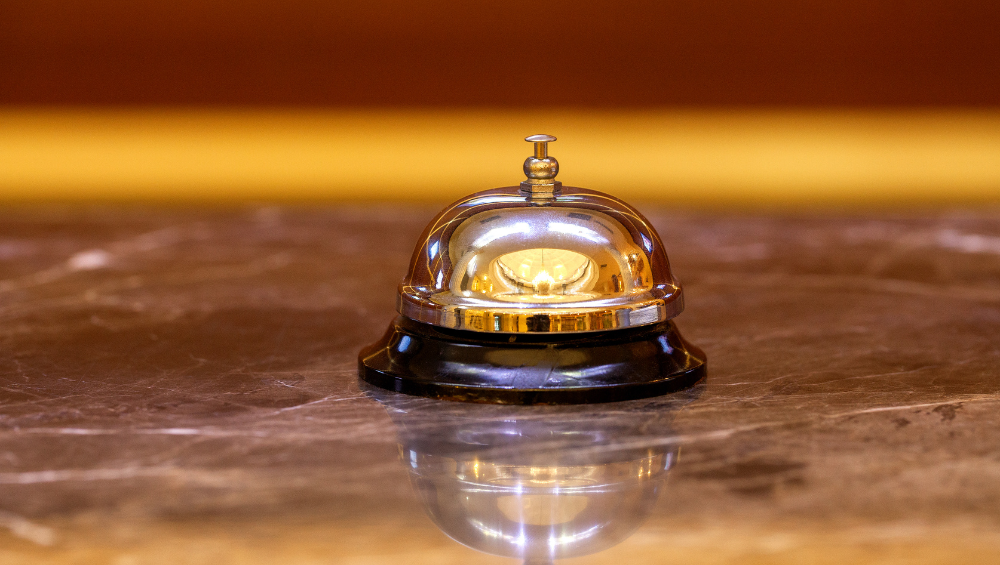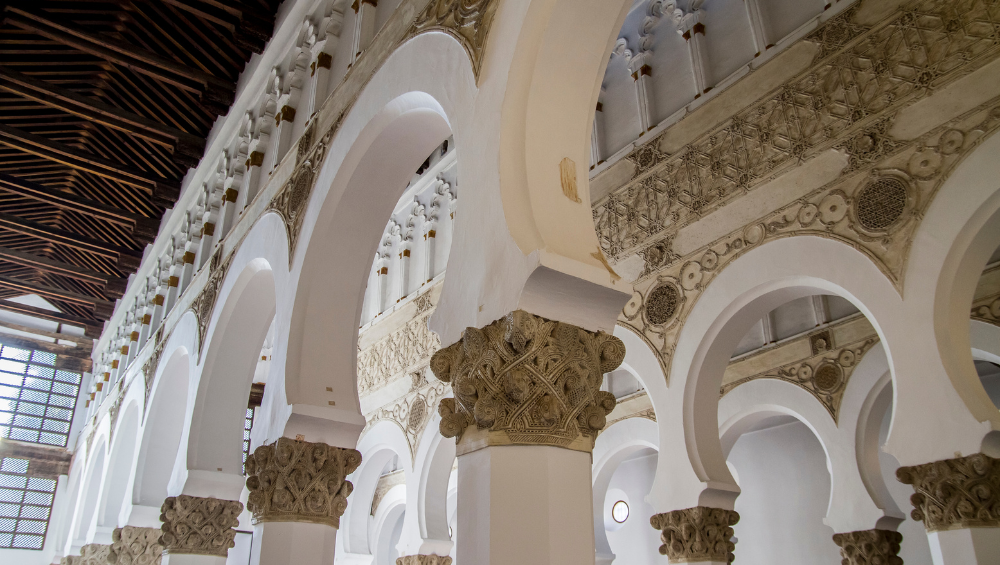Table of Contents
Adventure and history intertwine in an exquisite tapestry as we embark on a journey to explore some of the world’s most historic hotels. These architectural marvels, boasting captivating stories of times gone by, offer a unique travel experience that goes beyond luxury and comfort. Of course, I personally love to stay in a historic hotel because it is usually in the heart of the city.

Let’s set off on this voyage, immersing ourselves in the rich history of these remarkable historic hotels.
1. Raffles Hotel, Singapore
Located in the heart of Singapore, the iconic Raffles Hotel has been the epitome of luxury since 1887. Known for its colonial-style architecture and the birthplace of the world-famous Singapore Sling cocktail, Raffles has hosted notable guests including writers Rudyard Kipling and Ernest Hemingway. The best time to visit is during the Great Singapore Sale (June to August) when the city buzzes with energy and offers incredible shopping deals.
2. Fairmont Le Château Frontenac, Canada
Perched atop a cliff in Quebec City, Fairmont Le Château Frontenac overlooks the stunning St. Lawrence River. Dating back to 1893, its castle-like architecture and rich history have earned it a National Historic Site designation. Visiting during winter (December to February) allows for a picturesque, snow-draped view of the city and the hotel’s stunning Ice Castle.
3. The Plaza, United States
The Plaza in New York City, a symbol of timeless elegance, dates back to 1907. Its history is woven into the fabric of NYC, featuring in movies and novels alike. With its prime location at the southeast corner of Central Park, it’s best visited during fall (September to November) when the park transforms into a riot of autumnal hues.
4. The Taj Mahal Palace, India
Inaugurated in 1903, The Taj Mahal Palace in Mumbai is an architectural feat showcasing Indo-Saracenic style. It predates the Gateway of India by over 20 years and has been the choice of accommodation for kings, dignitaries, and artists. The best time to visit is between October and March, allowing visitors to avoid the city’s sweltering summer heat. India is an amazing place to visit if you have the time to travel around the country to see the splendor.
5. Hotel Alfonso XIII, Spain
Commissioned by King Alfonso XIII for the 1929 World’s Fair, Hotel Alfonso XIII in Seville merges Moorish, Castilian, and Andalusian architectural elements. Explore Seville’s rich history and vibrant flamenco culture while enjoying the hotel’s regal ambiance. The best time to visit is during the Seville Fair (April-May) when the city dances to the rhythm of flamenco music.
6. The Gritti Palace, Italy
This Venetian jewel, The Gritti Palace, dates back to 1475 and is a symbol of the grandeur of Venice. Originally the residence of the Doge of Venice, Andrea Gritti, it was transformed into a hotel in 1895. With its rooms adorned with priceless antiques and murals, the hotel is a living museum of art. The best time to visit Venice is during the spring (April to June) when the city is in full bloom and the Venice Biennale art festival takes place.
7. Hotel Sacher Wien, Austria
Founded in 1876, Hotel Sacher Wien in Vienna is home to the legendary Sacher-Torte, a unique chocolate cake that has become synonymous with Austrian culinary delight. The hotel exudes an old-world charm while offering modern comforts, and it’s located near the State Opera and other cultural attractions. Visit between May and June to enjoy mild weather and Vienna’s vibrant music festivals.
8. The Shelbourne, Ireland
Established in 1824, The Shelbourne Hotel is a timeless landmark in the heart of Dublin, Ireland. This iconic hotel, renowned for its traditional, opulent interiors, has been a backdrop to significant moments in Irish history, including the drafting of the nation’s constitution in 1922. Visit in the spring, particularly in March, to experience St. Patrick’s Day celebrations and witness Dublin in its most lively and vibrant form.
9. Pera Palace Hotel, Turkey
Located in the historic district of Istanbul, the Pera Palace Hotel was established in 1892 to accommodate passengers of the Orient Express. This grand hotel, with its blend of neo-classical, art nouveau, and oriental styles, has hosted esteemed guests like Agatha Christie and Ernest Hemingway. The best time to visit is from April to June when the weather is pleasant and the Tulip Festival takes place. Visiting Turkey is to explore the ancient city of Istanbul with a fresh view.
10. Hotel Negresco, France
Overlooking the stunning Baie des Anges in Nice, the Hotel Negresco is a belle-epoque masterpiece that dates back to 1913. This hotel is a treasure trove of art, housing a collection that spans five centuries. Visit between June to August, to enjoy the French Riviera’s sun-soaked beaches and glamorous nightlife.
11. Hotel de Crillon, France
Right in the heart of Paris, the Hotel de Crillon exudes timeless elegance and sophistication. Established in 1758, this historic hotel was originally a private residence commissioned by King Louis XV. The building’s stunning neoclassical architecture is matched only by its lavish interiors and world-class service. Opt to visit during the spring (March to June) to experience Paris in full bloom.
12. The Ritz London, United Kingdom
Ever since its doors opened in 1906, The Ritz London has stood as a benchmark for luxury and high society. Known for its Louis XVI-style architecture and its celebrated afternoon tea tradition, The Ritz continues to attract esteemed guests from around the world. The best time to visit is during the winter holiday season (December) when London is beautifully decorated with Christmas lights.
13. Waldorf Astoria Shanghai, China
Located on the Bund, the Waldorf Astoria Shanghai merges the charm of the past with contemporary luxury. The hotel, dating back to 1911, stands as a testament to Shanghai’s rich history and vibrant culture. Visit during autumn (September to November) to experience Shanghai’s comfortable weather and the bustling Mid-Autumn Festival.
14. Hotel Nacional de Cuba, Cuba
Overlooking the Malecon seafront, the Hotel Nacional de Cuba is a symbol of history, culture, and Cuban identity. Opened in 1930, the hotel’s art deco and neoclassical features have earned it a UNESCO Memory of the World designation. The best time to visit is during the dry season (November to April), when the weather is most favorable.
15. The Peninsula Hong Kong, Hong Kong
Opened in 1928, The Peninsula Hong Kong is one of the world’s oldest historic hotels and is often referred to as the “Grande Dame of the Far East”. Its blend of Eastern and Western hospitality traditions epitomizes timeless elegance. Visit during the winter (December to February) to enjoy mild weather and the vibrant Chinese New Year celebrations.
16. Fairmont Banff Springs, Canada
In the heart of Banff National Park, you’ll find the “Castle in the Rockies”, Fairmont Banff Springs. This legendary hotel, built in 1888, has been providing luxury accommodations in the Canadian Rockies for over a century. The hotel, with its distinct Scottish Baronial architecture, offers breathtaking views of mountains and valleys. The peak skiing season from December to March is the most popular time to visit.
17. The Beverly Hills Hotel, United States
Fondly known as the ‘Pink Palace’, The Beverly Hills Hotel is a beacon of glamour and luxury in Los Angeles. Established in 1912, this iconic hotel has been home to Hollywood’s biggest stars and has been featured in numerous films and TV shows. Its lush tropical gardens, luxurious rooms, and the famous Polo Lounge make it a must-visit destination. The hotel shines brightest during the awards season (January to February) when you can indulge in the Hollywood excitement.
18. The Ritz Paris, France
Located in the heart of Paris, The Ritz Paris is a symbol of opulence and luxury. Since its establishment in 1898 by César Ritz and chef Auguste Escoffier, this grand hotel has been an epitome of elegance, catering to the elite of society and hosting numerous notable figures from Ernest Hemingway to Coco Chanel. The hotel’s exquisite interiors, elegant suites, Michelin-starred restaurants, and the world-renowned Ritz Bar offer an unforgettable experience. Visit during the summer months (June to August) to enjoy the beauty of Paris under the sun.
19. Grand Hotel Excelsior Vittoria, Italy
Perched high on the cliffs of Sorrento, the Grand Hotel Excelsior Vittoria offers breathtaking views of the Bay of Naples and Vesuvius. Established in 1834, this historic hotel is famed for its old-world grandeur, beautiful gardens, and impeccable service. Its guest list boasts luminaries such as Richard Wagner and Oscar Wilde. The hotel’s location makes it an ideal base to explore the treasures of the Amalfi Coast. The best time to visit is between April and June, when the weather is ideal, and the region’s lemon trees are in bloom.
20. Hotel d’Angleterre, Denmark
Overlooking the stunning King’s New Square in the heart of Copenhagen, the Hotel d’Angleterre is a symbol of elegance, royalty, and tradition. Originally opened in 1755, this iconic hotel is synonymous with luxury and has been a preferred choice for dignitaries and celebrities visiting Denmark. The hotel is famous for its stunning architecture, grand interiors, Michelin-starred restaurant “Marchal,” and the elegant Champagne bar “Balthazar.” The best time to visit is during the summer (June to August) when the city enjoys the longest days and a host of cultural festivals.
21. Mandarin Oriental, Bangkok, Thailand
Situated along the banks of the Chao Phraya River, the Mandarin Oriental, Bangkok, represents a fusion of rich heritage, exquisite service, and Thai hospitality. Since opening its doors in 1876, the hotel has earned a reputation as one of the most luxurious historic hotels in the world. The hotel’s colonial-inspired architecture, lush gardens, and breathtaking river views offer a tranquil haven in the heart of bustling Bangkok. Its luxurious suites, world-class dining options, and the renowned Oriental Spa contribute to a truly unforgettable experience. The ideal time to visit is during the cool season (November to February), when Bangkok’s weather is at its most pleasant.
22. Badrutt’s Palace, Switzerland
Nestled in the heart of St. Moritz, Badrutt’s Palace is a landmark of unrivaled elegance and luxury. Since its inauguration in 1896, this legendary hotel has been synonymous with sophistication, offering guests an exquisite blend of Swiss alpine charm and the refined comfort of a palace. The hotel’s stunning architecture is complemented by its panoramic views of the Swiss Alps and Lake St. Moritz. Its beautifully appointed rooms and suites, top-tier restaurants, and the world-renowned Palace Wellness Spa make for an unparalleled experience. Ski enthusiasts should plan their visit during the winter season (December to March) when St. Moritz transforms into a winter wonderland.
23. Waldorf Astoria, New York, United States
Located in the heart of Manhattan, the Waldorf Astoria New York is renowned for its Art Deco elegance and prestigious heritage. Opened in 1931, this iconic hotel has hosted government officials, royalty, and celebrities from around the world. From its luxurious guest rooms to its renowned restaurants and bars, the Waldorf Astoria sets a standard in luxury accommodation. The hotel’s strategic location also makes it the perfect base to explore the city’s landmarks and attractions. Visit during the fall (September to November) to experience New York’s vivid autumnal colors and engaging cultural events.
24. The Jefferson, Washington DC, United States
Situated in the heart of Washington DC, The Jefferson is a boutique hotel that exemplifies sophistication and elegance. It has been a renowned destination since opening its doors in 1923, offering luxury accommodations that blend historical charm with modern amenities. The hotel is named after Thomas Jefferson, and its design is inspired by his love for architecture, literature, and fine wines. The Book Room, filled with books authored by and about the third US President, and the Michelin-starred Plume restaurant, are among its unique features that draw guests from around the world. The hotel’s location, close to the White House and other historic landmarks, makes it an ideal base for exploring the city. The best time to visit is in the spring (March to May) when you can witness the city’s iconic cherry blossoms in full bloom. There are some amazing day trips from Washington DC.
25. The Grand Hotel, England, United Kingdom
Prominently located on the seafront of Brighton, The Grand Hotel is a Victorian masterpiece capturing the essence of English elegance. The hotel opened in 1864, is a testament to the era’s architectural splendor and has been a favorite among royalty, celebrities, and tourists alike. Its sea-facing rooms offer breathtaking views of the Brighton Pier, and its acclaimed GB1 Seafood Restaurant and Bar serves some of the finest local delicacies. The hotel’s close proximity to The Lanes, Brighton’s famous shopping district, enhances its allure to visitors. The best time to visit is during the summer (June to August), when Brighton’s vibrant festivals are in full swing.

What Makes a Historic Hotel Special?
There’s something magical about staying at a historic hotel. Perhaps it’s the sense of stepping back in time or the feeling of being part of a rich and storied legacy. Whatever it is, there’s no denying that historic hotels have a charm and allure that sets them apart from other accommodations.
One thing that makes historic hotels special is their unique architecture and design. Many of these historic hotels were built during a time when grandeur and opulence were valued, resulting in stunning buildings with intricate details and luxurious interiors. These architectural gems are a testament to the craftsmanship of their time and offer guests a glimpse into the past.
Another factor that sets historic hotels apart is their rich history. These historic hotels have often been witness to significant events and hosted famous guests, adding to their allure. Staying at a historic hotel allows guests to immerse themselves in the stories and legends that have shaped its identity.
Moreover, many historic hotels offer top-notch service and amenities. From luxurious spas to award-winning restaurants, these historic hotels strive to provide guests with an unforgettable experience. Their attention to detail and commitment to excellence make for a truly special stay.
Lastly, historic hotels often have a prime location, making them the perfect base for exploring a city or region. Whether it’s overlooking a beautiful river or situated in the heart of a bustling metropolis, these historic hotels offer guests an ideal starting point for their travels.
Value of Historic Hotels to Travelers
The value of staying at a historic hotel goes beyond just having a comfortable place to rest. These historic hotels offer a unique and enriching experience that can’t be found anywhere else.
For history enthusiasts, staying at a historic hotel allows them to immerse themselves in the past and gain a deeper understanding of the events and figures that have shaped our world. It offers an opportunity to connect with history in a tangible way and create lasting memories.
For others, staying at a historic hotel is an opportunity to indulge in luxury and experience the elegance of a bygone era. It’s a chance to escape from everyday life and be transported to a different time and place.
Moreover, historic hotels often have ties to local culture and traditions, allowing guests to get a true sense of the destination they are visiting. From local cuisine to unique activities, these historic hotels offer a more authentic and immersive travel experience.
In addition, many historic hotels also play a significant role in preserving cultural landmarks and supporting local communities. By choosing to stay at a historic hotel, travelers can contribute to the preservation of these important sites and support sustainable tourism.
Overall, staying at a historic hotel offers travelers a one-of-a-kind experience that combines luxury, history, and cultural immersion. It’s a chance to create unforgettable memories and be a part of something special. So the next time you’re planning a trip, consider staying at a historic hotel for an unforgettable and enriching experience.
Architecture of Historic Hotels
One of the most defining features of a historic hotel is its architecture. These historic hotels are often grand and ornate, with intricate details and unique designs that reflect the time period in which they were built.
Many historic hotels were constructed during the Victorian era, known for their elaborate and opulent architectural style. This can be seen in buildings such as The Grand Hotel in England, with its stately facade and grand interiors.
Other historic hotels, such as The Jefferson in Washington D.C., feature a blend of architectural styles that reflect the personal tastes of their namesake. This mix of influences adds to the hotel’s charm and character.
In addition to their overall design, many historic hotels also boast unique architectural elements that add to their appeal. From domed ceilings to grand staircases, each of these features tells a story and adds to the hotel’s historic charm.
Furthermore, many historic hotels have undergone renovations and restorations to preserve their original architecture while also incorporating modern comforts. This careful balance between preserving the past and catering to present-day needs is what makes these historic hotels truly special.
Preserving History at Historic Hotels
Preserving the history and heritage of a historic hotel is no easy feat. These historic hotels have often been standing for centuries, and it takes dedication and resources to maintain their original charm.
One way that historic hotels preserve their legacy is through careful restoration and renovation projects. This involves maintaining the hotel’s original features while also updating amenities to meet modern standards. This ensures that guests can experience the best of both worlds – a glimpse into the past with all the comforts of the present.
Another way that historic hotels preserve history is through storytelling. Many of these historic hotels have dedicated historians or offer guided tours to guests, sharing the tales and legends that surround their property. This adds an extra layer of depth to a guest’s stay and allows them to fully appreciate the hotel’s rich history.
Moreover, historic hotels often play a role in preserving local cultural landmarks and traditions. By supporting these initiatives, they contribute to the preservation of important historical sites and support the communities in which they are located.

Time Travel with Historic Hotels
Historic hotels are far more than just places to stay. They are living, breathing monuments to our history, offering guests the unparalleled opportunity to step back in time and experience the luxury, elegance, and charm of bygone eras. From their majestic architecture to the rich stories they house, each historic hotel is unique and holds its own special place in time.
By staying at a historic hotel, you not only enjoy luxurious amenities and prime locations but also actively participate in preserving history and supporting local communities. So, when planning your next trip, consider immersing yourself in the rich tapestry of the past at a historic hotel. It promises to be an unforgettable experience that will enrich your travels with cultural insights and lasting memories.
FAQs about Historic Hotels
What makes a hotel “historic”?
A hotel is considered “historic” if it has a significant heritage value due to its age, architectural design, or connection to important events or figures in history. These hotels often retain architectural features and aesthetics reminiscent of the period in which they were built.
Are historic hotels more expensive?
While some historic hotels may charge premium rates due to their heritage, unique features, and exceptional services, not all historic hotels are expensive. The pricing depends on several factors, including location, luxury level, and the kind of services offered.
How well-maintained are historic hotels?
Historic hotels take immense pride in maintaining their legacy. They often undergo careful restoration and renovation projects to preserve their original charm while meeting modern-day comfort standards. Hence, guests can expect a well-maintained environment that respects the property’s historical significance.
Do historic hotels offer modern amenities?
Yes, many historic hotels blend history and modernity by preserving their original architectural features while offering modern amenities such as Wi-Fi, air conditioning, modern bathrooms, and more. The goal is to provide guests with a comfortable stay without compromising the historic charm.
Can staying at a historic hotel contribute to sustainable tourism?
Absolutely. Many historic hotels play an active role in preserving cultural landmarks and supporting local communities. By choosing to stay at a historic hotel, travelers can contribute to the preservation of these significant sites and support sustainable tourism.



